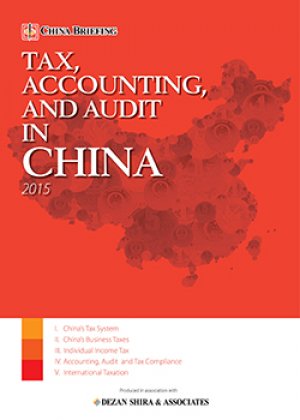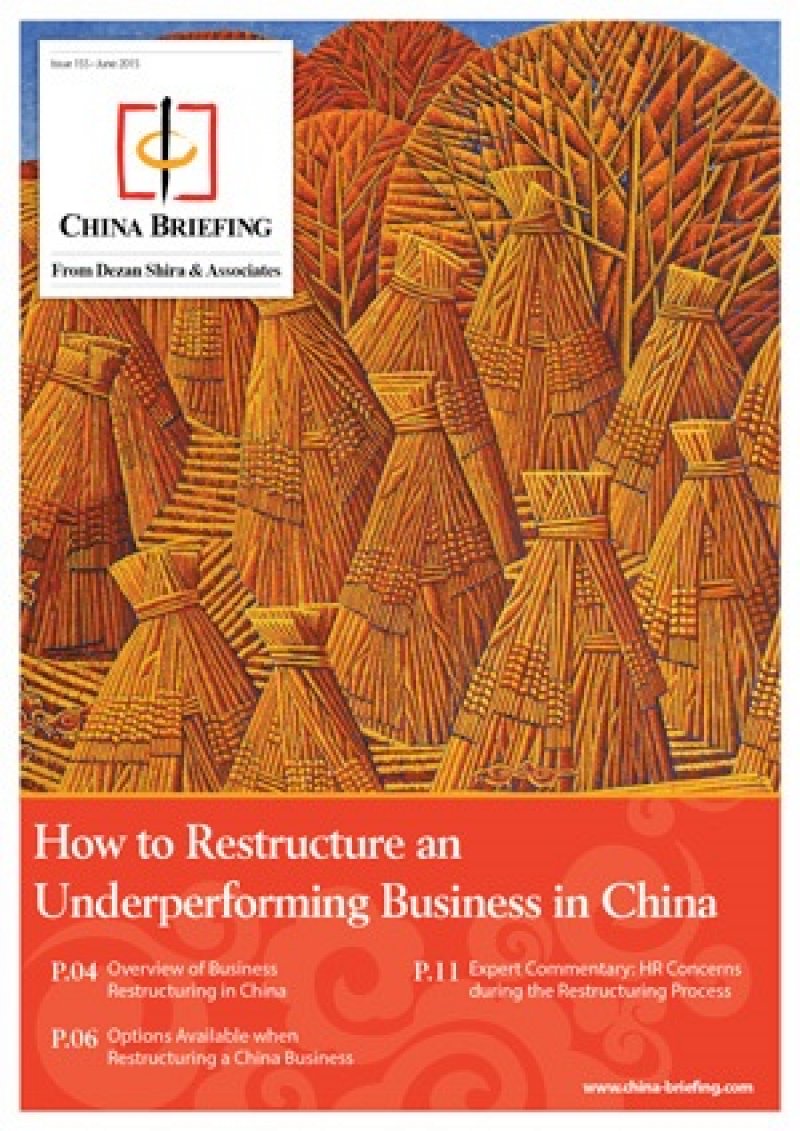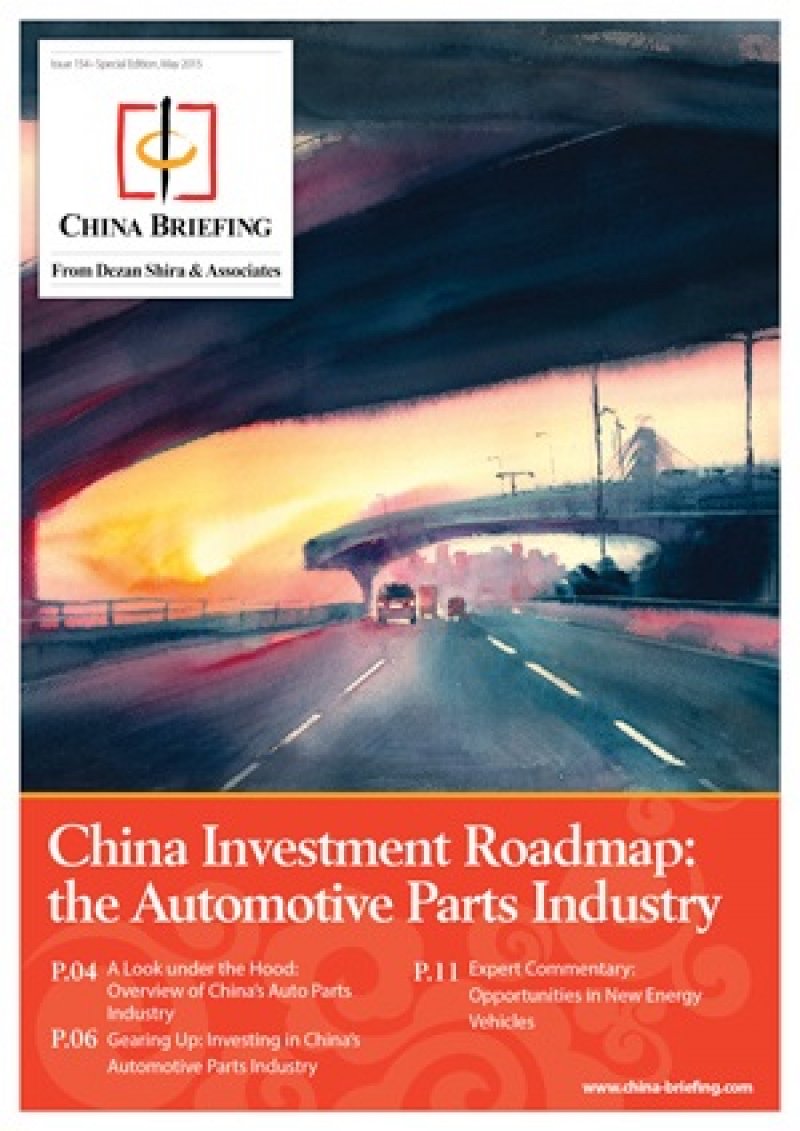With New Environmental Protection Tax, the Polluter Now Pays in China too
 By Elizabeth Leclaire
By Elizabeth Leclaire
After decades of devotion toward economic and industrial development, China is beginning to address the environmental concerns that have pained the nation in recent years. China’s Environmental Protection Law, which came into force early 2015 and increased factory liability for pollution, may soon by followed by a new “Environmental Protection Tax” (EPT). China’s EPT is in its exposure draft stage until July 9, 2015, during which the public may submit comments.
The EPT is a culmination of the efforts of China’s Ministry of Finance, State Administration of Taxation, and Ministry of Environmental Protection. Companies operating within China should take caution to remain current on EPT draft policy, as it imposes strict tax regulations on polluting companies, as well as harsh penalties for violators.
As it stands now, the EPT is to further increase company responsibility for pollution within China, whether in the form of air, water, solid, or noise pollution. Minimum taxation amounts for pollution will be established on a national level. However, provincial governments will have the discretion to raise tax minimums to better mitigate the environmental concerns of the particular province.
Calculating Pollutant Tax
Measuring Pollutants
In order to accurately measure the quantity of pollutant emitted, companies will be permitted to install a State-approved pollution discharge monitoring device. The pollution discharge quantities recorded by the machine will be used to later determine the appropriate pollution tax amount to be imposed on the company.
In the event that a company does not purchase a pollution discharge monitoring device, a State-approved pollution monitoring institution will calculate pollution emission amounts.
Pollutant Equivalent Values
Pollutant Equivalent Values (EPVs) are numerical constants used in calculating EPT. Each different pollutant type is assigned its own EPV. For example, pollution through mercury emission has an EPV of 0.0005, while the EPV of carbon monoxide pollution is 16.7. Companies should familiarize themselves with relevant EPVs in order to anticipate the effects of the pending EPT legislation.
Calculations
Companies can calculate individual air and water pollutant emission tax by dividing the quantity of the pollutant discharged by the corresponding EPV. The number produced is referred to as the “pollution equivalent” and is then multiplied by specific tax rates set by the government.
![]() RELATED: The East is Green: The Future of China’s Environmental Regime
RELATED: The East is Green: The Future of China’s Environmental Regime
For example, a company looking to calculate tax on 1000 kg of mercury would divide the 1000 kg by 0.0005 (mercury’s EPV). This calculation equates to a pollution equivalent value of two million, which is then multiplied by mercury emission current tax rate of RMB 1.2. After multiplying two million by RMB 1.2, the final tax on 1000 kg of mercury emission would total RMB 2,400,000.
Noise pollution due to construction is calculated at a rate of RMB 3 per one square meter of construction. However, pollution due to industrial noise is calculated based off the number of decibels the industrial noise exceeds standards established by the government. Industrial noise tax can range from RMB 350 per month (one decibel above standard) to RMB 11,200 per month (18 decibels above standard).
Solid waste taxation is determined by the amount produced, and ranges from RMB 5-30 per ton depending on the specific solid pollutant emitted.
Tax Exemptions
It is important to note that not all pollutant discharges within a company will be subjected to the new taxation. Water pollutants will be divided between heavy metals and remaining toxins, and only the five highest heavy metal pollutant equivalents and three highest remaining toxin pollutant equivalents will be taxed. Similarly, only a company’s air pollutants with the three highest pollutant equivalents will feel the effects of taxation.
Additionally, any company which empties pollutants in urban wastewater treatment plants or urban domestic waste treatment plants is exempt from the EPT. Pollution produced from vehicles, ships, trains, and planes, and agricultural production (except large scale) is not covered either.
Tax Collection
The current EPT draft states that tax collection should occur at the location where the pollution is discharged. China’s tax authorities have the discretion to choose how frequently the tax will be collected, either on a monthly, quarterly, or annual basis.
In the event that a company emits pollution irregularly, the tax will be collected on a case by case basis.
![]() RELATED: No More Surprises as China Moves to Formalize Tax Legislative Process
RELATED: No More Surprises as China Moves to Formalize Tax Legislative Process
Taxpayers must be careful to strictly follow tax collection procedures, as violations can lead to fines of up to five times the tax amount unpaid. China’s environmental protection departments also maintain the right to investigate and review any suspicious activities of companies operating within China at their own discretion.
Conclusion
As China turns its attention toward environmental protection, companies must be sure to stay current on China’s most recent legislation. The pending EPT is likely another step in the process to restore China’s environment, and companies unprepared for the adjustment may find themselves struggling to adapt to the changing industrial climate.
|
Asia Briefing Ltd. is a subsidiary of Dezan Shira & Associates. Dezan Shira is a specialist foreign direct investment practice, providing corporate establishment, business advisory, tax advisory and compliance, accounting, payroll, due diligence and financial review services to multinationals investing in China, Hong Kong, India, Vietnam, Singapore and the rest of ASEAN. For further information, please email china@dezshira.com or visit www.dezshira.com. Stay up to date with the latest business and investment trends in Asia by subscribing to our complimentary update service featuring news, commentary and regulatory insight. |
![]()
 Tax, Accounting, and Audit in China 2015
Tax, Accounting, and Audit in China 2015
This edition of Tax, Accounting, and Audit in China, updated for 2015, offers a comprehensive overview of the major taxes foreign investors are likely to encounter when establishing or operating a business in China, as well as other tax-relevant obligations. This concise, detailed, yet pragmatic guide is ideal for CFOs, compliance officers and heads of accounting who must navigate the complex tax and accounting landscape in China in order to effectively manage and strategically plan their China operations.
How to Restructure an Underperforming Business in China
In this issue of China Briefing magazine, we explore the options that are available to foreign firms looking to restructure or close their operations in China. We begin with an overview of what restructuring an unprofitable business in China might entail, and then take an in-depth look at the way in which a foreign company can go about the restructuring process. Finally, we highlight some of the key HR concerns associated with restructuring a China business.
China Investment Roadmap: the Automotive Parts Industry
This issue of China Briefing presents a roadmap for investing in China’s automotive industry. We begin by providing an overview of the industry, and then take a comprehensive look at key foreign investment considerations, including investment restrictions, tax incentives and manufacturing requirements. Finally, we discuss foreign investment opportunities in a part of the industry that receives substantial government support: new energy vehicles.
- Previous Article China’s VAT Amongst Highest in Asia
- Next Article Options Available when Restructuring a China Business











